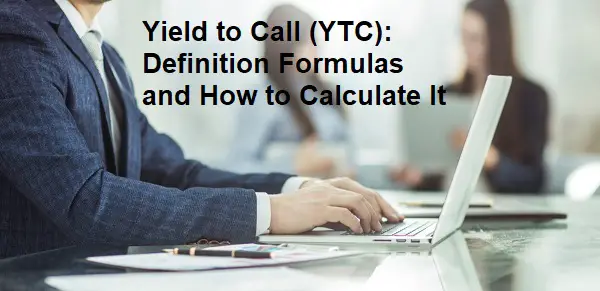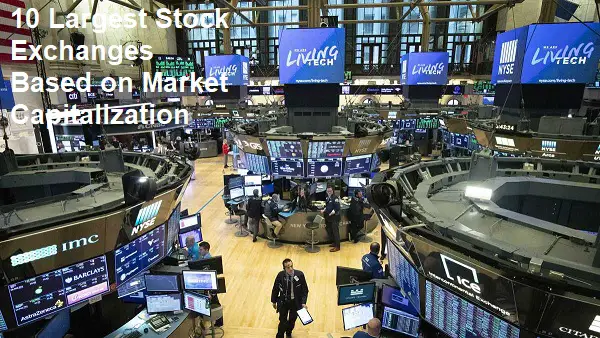Yield to Call is a metric used in calculating the profit potential of a convertible bond. You can use this method to compare the rate of return on a convertible bond with another convertible bond. That way, you can get a more complete picture of which convertible bonds are more profitable before deciding to buy one of them.
In this article, we will discuss yield to call (YTC), including its meaning, formula and how to calculate it. If you want to know more about yield to call, you can see the discussion below.
What is Yield to Calls (YTC)?
Yield to Call (YTC) is the expected return when investors convert bonds into shares at a predetermined price and time. By calculating YTC, investors can find out how high the potential profit from a convertible bond is when it is converted into shares. Thus helping investors in making decisions to buy or not to buy convertible bonds as part of the investment portfolio.
Convertible bonds themselves are a type of bond that gives investors the right to get a return on investment in cash converted into shares of the company issuing the bonds. This type of bond usually offers higher returns, but comes with high risks as well. This risk comes from the company’s fluctuating stock price, so that when investors decide to convert bonds into shares, the stock price may fall lower than the principal of the bonds.
Even so, convertible bonds tend to be preferred, especially by investors who want shares of the company issuing the bond. Because through conversion, investors can get shares at a cheaper price than buying them directly on the capital market.
However, as a consideration in buying a convertible bond, yield to call is used to see the expected return on the bond. If the yield to call is high, it means that a bond is worth buying because it is profitable. Meanwhile, if the yield to call is low, then the bond is considered unprofitable and not worth buying.
But, even though it is a measure or indicator to see the profit potential of convertible bonds, the yield to call (YTC) does not always give investors an accurate picture of the profit. Instead, investors should also pay attention to other factors, such as bond risk, bond market interest rates and others.
The Formula for Calculating Yield to Call (YTC)
The formula for calculating yield to call (YTC) is as follows:
YTC = (B + (S – K) / N) / (S + P / 2)
where:
B is the amount of interest paid each year
S is the current stock price
K is the conversion price of the bond
N is the time period until the conversion date
P is the current bond price
As an example, let’s calculate the yield to call of a bond that has convertible rights into stock with a conversion price of $50 after three years. If the current stock price is $60, the current bond price is $1000, and the bond pays 10% interest annually, then the formula to calculate the yield to call is as follows:
YTC = (10 + (60 – 50) / 3) / (60 + 1000 / 2)
= (10 + 10 / 3) / (60 + 500)
= (10 + 3.33) / 560
= 13.33 / 560
= 2.39% per year
So, the yield to call of these bonds is 2.39% per year.
Yield to call is a type of bond where the bond issuer can buy back the bonds issued before the maturity date. So this is a type of bond where the issuer can buy and pay off the bonds at any time. Bonds with a yield to call facility are also known as callable bonds.
Actually, in the eyes of investors, especially investors with an aggressive character, this callable bond is not an attractive bond product. You see, there is no certainty that the bond will continue to yield until the maturity date. Now just imagine, for example, there is a bond with an interest coupon of 5% per year and a maturity of 10 years. Of course an investor already imagines that he will get a yield of 5% per year. But suddenly, in the 5th year, the bond has been redeemed by the issuer. Of course, the projected profit of 5% per year in the 6th to 10th years is cancelled.
However, in the eyes of conservative investors, callable bonds are not a bad choice. Especially in callable bonds, usually there is a tendency that the issuer will redeem the bond before maturity. So you could say there’s a kind of extra security in this type of bond. In essence, the risk of callable bonds can be said to be smaller than other types of bonds.
From the point of view of the bond issuer, callable bonds themselves are usually made and issued by taking into account interest rates. For example, for example, the central bank sets the benchmark interest rate up to 3%. So, for example, a company issues bonds with a yield of 3.5%. The company only provides yields slightly above the central bank’s benchmark interest rate, but they are more attractive than deposit products.
But there is a risk, if there is a decrease in interest rates, the bond issuer company will be harmed. So, if there is a decrease in interest rates, the company will immediately repay all bonds issued. Indeed, in actual conditions, this type of bond is common in countries where fluctuations in the value of the benchmark interest rate are quite dynamic. Yes, bond issuers must protect their bonds from fluctuations in interest rates, especially falling interest rates, so there must be an option to pay off the bonds before maturity.









